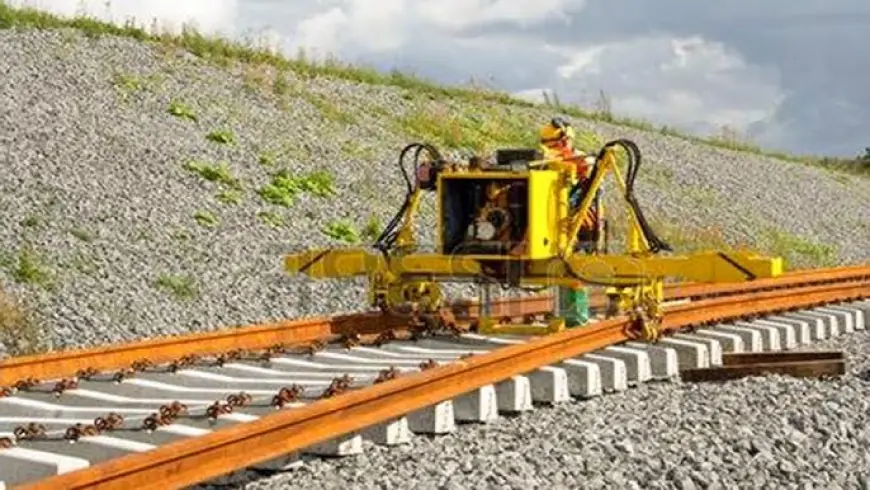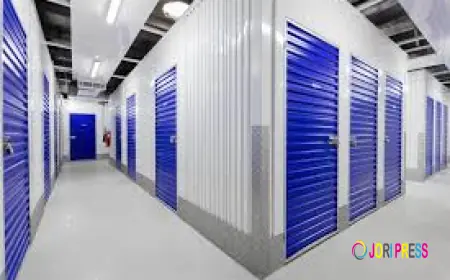Growth Drivers of India Railway Equipment Market 2030F Study
Despite the positive growth outlook, the market still faces challenges such as high project costs, land acquisition issues, and bureaucratic hurdles.

According to a recent industry study, the India Railway Equipment Market was valued at USD 12.31 billion in 2024 and is anticipated to reach USD 15.9 billion by 2030, growing at a steady CAGR of 3.61% during the forecast period. This growth trajectory reflects the country’s accelerated efforts to modernize its railway system, improve passenger safety, and meet the rising demand for efficient, sustainable, and affordable transportation solutions.
As the backbone of India’s transportation ecosystem, the railway sector plays a pivotal role in both economic development and social connectivity. With rapid urbanization, the emergence of megacities, and increasing freight movement, the need for advanced railway equipment has never been greater. Rolling stock modernization, smart signaling systems, electrification of tracks, and multi-modal integration are at the heart of this transformation.
Market Overview
India’s railway network is one of the largest in the world, carrying over 8 billion passengers annually and transporting nearly 1.2 billion tonnes of freight. The modernization and expansion of this network demand massive investments in railway equipment — ranging from locomotives and coaches to signaling systems, tracks, and electrification infrastructure.
The Indian government’s commitment to strengthening railway infrastructure under schemes such as “Make in India”, National Rail Plan 2030, and public-private partnerships (PPPs) has created significant opportunities for equipment manufacturers, both domestic and global.
Download Free Sample Report: https://www.techsciresearch.com/sample-report.aspx?cid=4216
Key Market Segmentation
The India Railway Equipment Market can be segmented into three major categories:
- Rolling Stock
- Includes locomotives, passenger coaches, freight wagons, DMUs (Diesel Multiple Units), EMUs (Electric Multiple Units), and maintenance vehicles.
- Rolling stock accounts for the largest share due to continuous investments in high-speed trains, metro coaches, and modern freight wagons.
- Railway Infrastructure
- Comprises tracks, signaling systems, station facilities, overhead electrification, and safety systems.
- With over 80% electrification target by 2030, this segment is expected to see robust demand.
- Others
- Includes software solutions, monitoring equipment, ticketing systems, and safety technologies.
- Digitalization and smart technologies are driving growth here.
Emerging Trends in the India Railway Equipment Market
1. Electrification and Green Mobility
The government aims for 100% electrification of broad-gauge railway lines by 2030, aligning with India’s net-zero emission targets. This shift is accelerating demand for electric locomotives, modern power systems, and advanced signaling equipment.
2. Smart Signaling and Digital Systems
Adoption of AI-driven signaling, IoT-enabled monitoring, and real-time communication systems is enhancing safety and efficiency. These systems reduce accidents, minimize delays, and improve network capacity.
3. High-Speed Rail Projects
The upcoming Mumbai-Ahmedabad High-Speed Rail (Bullet Train) is a game-changer. It sets a precedent for modern railway equipment requirements — from high-speed coaches to state-of-the-art signaling and track technology.
4. Urban Metro and Suburban Growth
With metros expanding in Delhi, Bengaluru, Chennai, Hyderabad, Pune, and Lucknow, demand for rolling stock, smart ticketing, and modern station equipment is surging. Metro systems are becoming the lifeline of urban India.
5. Multi-Modal Integration
The concept of seamless mobility is reshaping passenger expectations. Integration of railways with metros, buses, and ride-sharing platforms is encouraging the adoption of interoperable ticketing and unified mobility solutions.
6. Sustainability and Renewable Energy
Railways are investing in solar-powered stations, wind energy for operations, and regenerative braking systems in locomotives. Green policies are shaping procurement patterns for future railway equipment.
7. Smart Freight Corridors
Dedicated Freight Corridors (DFC) are revolutionizing logistics. They require specialized wagons, heavy-duty locomotives, and automated freight handling systems, boosting demand in the freight equipment market.
Market Drivers
Rising Urbanization & Congestion
India’s cities are facing severe traffic congestion. Metro rail and suburban systems are emerging as sustainable solutions, directly increasing demand for modern rolling stock and infrastructure equipment.
Government Investments
The government’s record budget allocations for railways, along with PPP projects, continue to drive the sector. Initiatives like station redevelopment and regional rail corridors fuel further equipment demand.
Growing Passenger Demand
With rising middle-class incomes and urban migration, passenger numbers are expected to grow substantially, necessitating more coaches, EMUs, and safety systems.
Freight Transport Growth
As India becomes a global manufacturing hub, freight transportation through rail is expanding. Specialized container wagons, high-capacity freight trains, and dedicated freight corridors support this growth.
Safety & Security Concerns
The need to reduce accidents at unmanned crossings, improve perimeter security, and adopt CCTV monitoring, AI-driven alert systems, and advanced signaling is driving safety equipment demand.
Industry Key Highlights
- Market size expected to reach USD 15.9 billion by 2030.
- Rolling stock remains the largest and most dynamic segment.
- South India projected as the fastest-growing region, supported by metro expansions in Bengaluru, Chennai, and Hyderabad.
- Strong government push for rail electrification and modernization.
- Increasing participation from global players and domestic manufacturers.
- Metro projects and bullet train initiatives to act as long-term growth catalysts.
- Investments in AI, IoT, and automation transforming railway safety and operations.
Competitive Analysis
The India Railway Equipment Market is competitive, with both domestic leaders and international giants vying for contracts.
Major Companies in the Market:
- CRRC Corp. Ltd – A global leader in rolling stock manufacturing.
- Siemens AG – Strong in signaling systems, electrification, and automation.
- Bombardier Inc. (now part of Alstom) – Known for metro and passenger coaches.
- Alstom SA – Major supplier of high-speed trains and locomotives in India.
- Wabtec Corp. (formerly GE Transportation) – Dominant in freight locomotives.
- Hyundai Rotem – Supplies metro coaches and modern rolling stock.
- Stadler Rail AG – Focused on specialized passenger coaches.
- The Greenbrier Companies – Strong in freight wagons.
- Trinity Industries Inc. – Known for heavy-duty freight railcars.
The competitive landscape is marked by partnerships with Indian Railways and joint ventures with local manufacturers to ensure localization, technology transfer, and cost efficiency.
Future Outlook
The future of the India Railway Equipment Market is promising, supported by:
- Expansion of high-speed rail networks across regions.
- 100% electrification targets driving demand for electric locomotives.
- Smart technologies enabling predictive maintenance and digital ticketing.
- Increasing foreign direct investment (FDI) in railway manufacturing.
- Growing emphasis on green energy, sustainability, and eco-friendly rolling stock.
- Station modernization projects offering opportunities in signaling, surveillance, and passenger convenience equipment.
By 2030, India is expected to emerge as a global hub for railway equipment manufacturing, exporting not just to Asia but also to Africa and Europe.
10 Benefits of the Research Report
- Provides detailed market size and growth forecasts till 2030.
- Offers in-depth segmentation by type, application, and region.
- Identifies key growth drivers, challenges, and opportunities.
- Tracks technological advancements influencing market growth.
- Highlights regional dynamics with a focus on South India.
- Analyzes the competitive landscape and profiles top players.
- Supports strategic investment decisions with reliable insights.
- Examines government initiatives and regulatory frameworks.
- Forecasts future trends in sustainability and green mobility.
- Assists businesses in developing long-term growth strategies.
Conclusion
The India Railway Equipment Market is at the cusp of a major transformation. Backed by government initiatives, private investments, urbanization, and technological innovation, the market is projected to grow steadily through 2030. Rolling stock modernization, electrification, and smart signaling are key pillars of this progress.
With global leaders and Indian manufacturers working hand in hand, India is poised not only to upgrade its own railway system but also to emerge as a leading supplier of railway equipment worldwide. For stakeholders, investors, and policymakers, this market presents abundant opportunities — ensuring that India’s railways continue to serve as the lifeline of national connectivity and economic growth.
Contact Us-
Mr. Ken Mathews
708 Third Avenue,
Manhattan, NY,
New York – 10017
Tel: +1-646-360-1656
Email: [email protected]
Website: www.techsciresearch.com
What's Your Reaction?
 Like
0
Like
0
 Dislike
0
Dislike
0
 Love
0
Love
0
 Funny
0
Funny
0
 Angry
0
Angry
0
 Sad
0
Sad
0
 Wow
0
Wow
0



















































